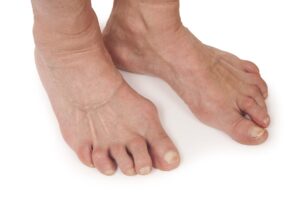
Hip Dysplasia: A Guide for Parents and Adults
Hip dysplasia (developmental dysplasia of the hip – DDH) is a condition that affects the hip joint.



What is PTTD?
The posterior tibial tendon serves as one of the major supporting structures of the foot, helping it to function while walking. Posterior tibial tendon dysfunction (PTTD) is a condition caused by changes in the tendon, impairing its ability to support the arch. This results in flattening of the foot.
PTTD is often called adult acquired flatfoot because it is the most common type of flatfoot developed during adulthood. Although this condition typically occurs in only one foot, some people may develop it in both feet. PTTD is usually progressive, which means it will keep getting worse, especially if it is not treated early.
What causes PTTD?
The posterior tibial tendon usually tears due to overuse. Athletes who play high impact sports such as basketball, or soccer may acquire tears of the tendon from repetitive stress and overloading. An acute injury, such as from a fall, can tear the posterior tibial tendon or cause it to become inflamed. Once the tendon becomes inflamed or torn, the arch will slowly fall (collapse) over time.
Symptoms of PTTD
Examination and diagnosis
Your Podiatrist will take a complete medical history and ask about your symptoms. During examination of the foot and ankle, they will check if the following signs are present:
Your Podiatrist may also refer you to undergo imaging studies such as X-ray, Ultrasound, CT or MRI to assist in the diagnosis of this condition, and to rule out other conditions such as arthritis. If you are having problems with pain in your lower legs and feet, don’t hesitate to call us on 9569 5145 or make a booking online and the team at Sole-Lution Podiatry will sort you out. We are located at 398 Marrickville Rd, Marrickville, NSW, 2204.
Stay tuned for PTTD Part 2 – How to treat PTTD

Hip dysplasia (developmental dysplasia of the hip – DDH) is a condition that affects the hip joint.

Heel pain can be a real drag, especially when that first step in the morning feels like stepping on a tack. One culprit behind this discomfort can be heel spurs. But what exactly are they, and more importantly, how can you fix them?

Arthritis in the feet can significantly disrupt your daily life, turning simple walks into painful struggles.